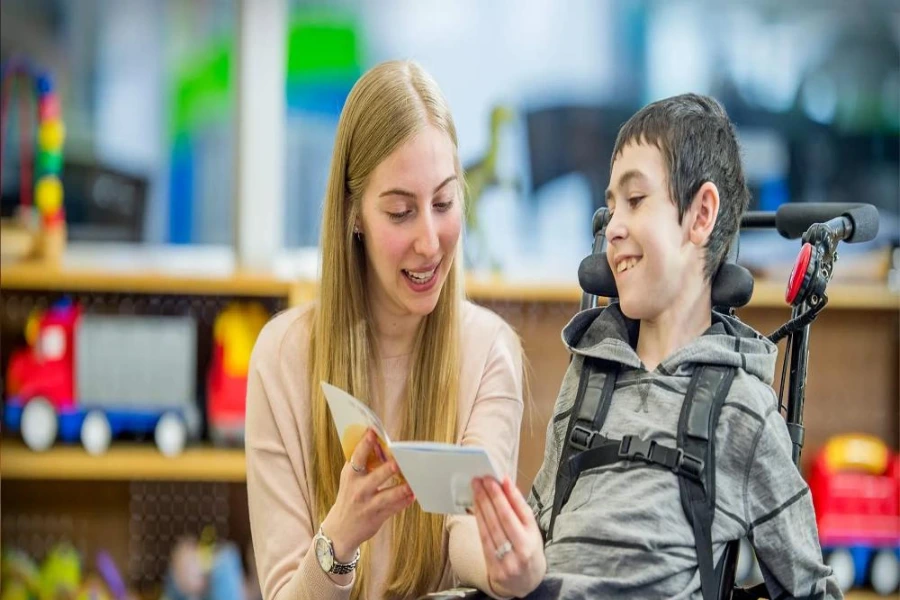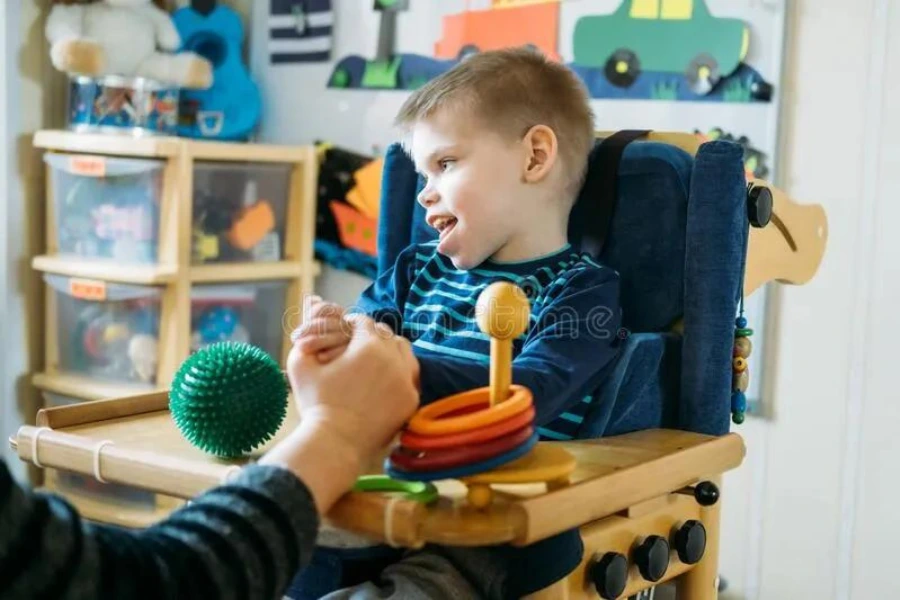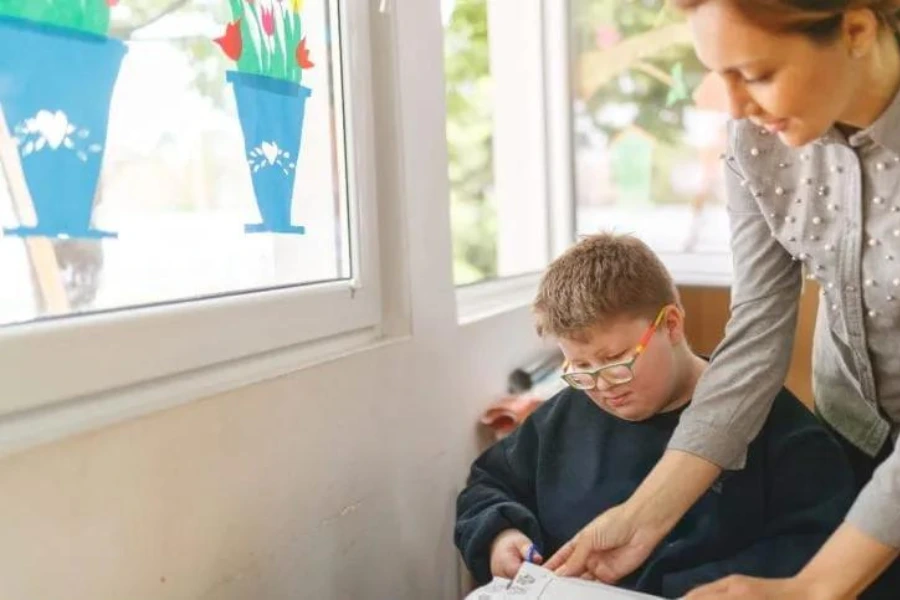What are various Autism Therapy?

Source: education
What are various Autism Therapy?
A range of therapies are included in autism therapy, which is intended to support people with autism spectrum disorder (ASD) as they traverse their developmental track. Since each form of action has its compensations and strategies, parents, carers, and teachers need to appreciate the various forms of autism therapy.
Amongst these therapies, some of the greatest operatives include:
- Behavior Therapy: This therapy focuses on reinforcing desirable behaviours and reducing harmful ones, helping individuals with ASD to navigate social and personal challenges better.
- Play Therapy: Through the power of play, this therapy helps in developing social, communication, and emotional skills, making learning both fun and impactful.
- Speech Therapy: Essential for enhancing communication skills, Speech Therapy aids individuals with autism in expressing themselves more clearly and understanding others better.
- Joint Attention Therapy: This therapy emphasizes developing shared attention skills, a fundamental aspect of social interaction and learning.
All of these Autism Therapies play a crucial role in supporting learners with autism, ensuring they can attain their full potential in a fostering and empathetic environment.
Table of Content

Source: dreamcareer
Why Occupational Therapy for Autism is considered?
For individuals with autism spectrum disorder undergoing occupational therapy is a must. This therapy emphasizes on evolving and refining the required skills for daily existence and individuality.
The important objectives and requirements for retaining Occupational Therapy for Autism are as follows:
Enhancing Sensory Processing
Many individuals with autism experience sensory processing challenges. Occupational therapy is an essential healthcare practice which helps children to develop basic life skills which is needed for their daily functioning.
Improving Motor Skills
Occupational therapists work to develop fine and gross motor skills. For broods and grownups with autism, this can mean refining coordination, equilibrium, and motor development.
Social Interaction Skills
Occupational Therapy for Autism often includes activities designed to enhance social interaction. This can include education to read social prompts and indulge in correct activities to play with peers.
Promoting Independence
A core goal of Occupational Therapy for Autism is to foster independence in everyday activities.
Cognitive Skill Development
Occupational Therapy for Autism assists in the development of cognitive skills like attention, memory, and problem-solving.
Emotional Regulation
Occupational therapists help individuals with autism learn strategies to regulate their emotions which is essential to overcome anxiety or irritation which is experienced by them.
Customized Interventions
Every individual with autism is unique, and Occupational Therapy for Autism tailors its approach to meet each person’s specific needs and challenges.
Family and Caregiver Support
Occupational therapists also provide guidance and support to families and caregivers, offering strategies to support the individual’s development at home and in other settings.
Occupational therapy for autism is a proactive strategy to tackle the challenges faced by individuals with autism. Occupational therapists play a predominant role in enabling children with autism disorder to perform their daily duties independently with very little help from others. This ensures enhancing their life-skills fostering a sense of dependence amongst them.

Source: dreamstime
For enrolment details call or whatsapp VES at +919321024137 / +919869866277.
For Downloading the Special Education Course brochure Click Here
How is ABA Therapy Autism Used?
Applied Behavior Analysis (ABA) therapy is a scientifically designed approach also known as behavioral engineering directed primarily towards strengthening the social skills of children and using strategies to improve the behaviour of children with autism spectrum enabling them to settle down comfortably into a regular classroom.
The functioning of the ABA therapy and its effectiveness for children with autism can be highlighted using the below points:
Understanding ABA Therapy for Autism
Behavioural Assessment
The initial step in ABA therapy for autism involves understanding the individual’s current skills, challenges, and behaviours. This review helps to assess the success of personalized therapy goals created for children with autism spectrum.
Development of a Treatment Plan
Based on the assessment, therapists design a tailored ABA therapy plan for autism, focusing on specific developmental areas such as communication, social skills, and Behavior management.
Implementation of Interventions:
ABA therapy for autism utilizes a variety of techniques.
These include:
- Discrete Trial Training (DTT): this involves breaking of the tasks into smaller manageable tasks.
- Pivotal Response Training (PRT): This emphasizes significant areas of a child’s overall development and the interaction with the environment around them.
- Natural Environment Training (NET): Skills are taught within natural settings.
Consistent Monitoring and Adjustment
Progress is regularly monitored, and the therapy plan is adjusted as needed to ensure the most effective approach.
Family Involvement
Parents and caregivers are often trained to implement ABA techniques at home, promoting consistency and reinforcing learning.
Why ABA Therapy is used for Autism
Evidence-Based Results
ABA therapy for autism has a strong track record of success, supported by extensive research.
Customization and Flexibility
The therapy is highly adaptable, allowing it to meet the unique needs of each individual with autism.
Focus on Critical Skills
ABA therapy for autism targets essential life skills, including communication, social interaction, and self-care, enhancing the individual’s ability to navigate daily life.
Long-Term Impact
The skills and behaviours learned through ABA therapy for autism have long-lasting effects, often leading to significant improvements in overall quality of life.
Holistic Development
Beyond addressing specific behaviors, ABA therapy for autism promotes broader developmental growth, encouraging independence and self-confidence.
ABA Therapy or behavioral engineering is a prime therapy that has practical time-tested methods which have high evidence of providing guaranteed benefits to children with autism spectrum enabling them to reach their true potential and live meaningful lives.

Source: pacificoaks
For enrolment details call or whatsapp VES at +919321024137 / +919869866277.
For Downloading the Special Education Course brochure Click Here
How is PECS Autism Used for Communication?
The Picture Exchange Communication System (PECS) is a self-initiating technique that allows individuals with very little communication abilities to communicate using pictures. PECS makes use of virtual aids including symbols and pictures to initiate some form of communication making it a priceless tool for those with a unique form of autism who face challenges with regular language difficulties.
Objectives of PECS Autism Therapy
Promote Independent Communication
PECS autism therapy is aimed at helping individuals express their needs and desires independently using picture cards.
Develop Functional Communication
It’s focused on practical, everyday communication, allowing those with autism to convey their needs effectively.
Transition to Spoken Language
For some, PECS autism therapy can be a stepping stone towards developing spoken language skills.
Communicating Using PECS Autism Therapy
Choosing a Picture:
The individual selects a picture that represents their need or desire. For e.g, if a picture of an apple is shown it depicts the desire to eat the apple
Giving the Picture to a Communicative Partner
The individual hands the picture to someone else, like a teacher or parent, to initiate communication.
Fulfilling the Request
The communicative partner responds to the request, reinforcing the effectiveness of communication through PECS. In our example, they would provide the individual with an apple.
Expanding the System
Over time, the individual learns to use more complex sentences using picture cards, like combining a picture of an apple with a picture of “want” to create the sentence “I want an apple.”
Why PECS Autism Therapy is used?
Non-Reliance on Verbal Skills
PECS autism therapy is ideal for individuals who have limited or no speech. It provides a visual way to communicate.
Encourages Initiation
Unlike other forms of communication, PECS autism therapy encourages the individual to initiate communication, fostering independence.
Simplicity and Accessibility
The simplicity of PECS autism therapy makes it easily accessible to individuals with a wide range of cognitive abilities.
Customizability
The system can be tailored to the individual’s needs and preferences, using images that are most relevant and meaningful to them.
PECS autism therapy has emerged as an effective approach promoting well-being of individuals with autism. An extremely simple form of therapy yet an effective mode to equip individuals with autism to enhance their communication skills and empower them to emote better and express themselves confidently.
For enrolment details call or WhatsApp VES at +919321024137 / +919869866277.
To download the Special Education Course brochure Click Here
What is Autism Behavior Therapy?
Autism Behavior Therapy refers to the approach that is specifically designed to help individuals with autism manage their challenges. This therapy emphasizes on betterment of social skills to improve social interactions, and communication skills enabling children with autism to merge comfortably in a mainstream classroom and control behaviours that might be harmful to others.
Basis of Autism Behavior Therapy
Enhancing Communication Skills
Autism Behavior Therapy is curated to improve communication skills which includes both verbal and non-verbal skills enabling individuals to be expressive about their needs and discomforts while in midst of a crowd.
Social Skills Development
Social interaction is often challenging for those with ASD.
Behavioral Adjustment
This therapy aims at minimizing behaviors that are potentially harmful or disruptive, such as self-harm or aggressive behavior, through positive reinforcement techniques.
Learning and Cognitive Skills Enhancement
Improving attention, concentration, and executive functioning are also key aspects of Autism Behavior Therapy, facilitating better academic and life skills.
Application of Autism Behavior Therapy: Examples
Applied Behavior Analysis (ABA)
This is a widely recognized method within Autism Behavior Therapy. This therapy makes use of giving children rewards for promoting positive behaviour without exercising any kind of force or commands.
Social Skills Groups
These are structured groups where individuals with autism can practice and develop social skills in a safe and guided environment, often forming part of Autism Behavior Therapy programs.
Occupational Therapy
Integrated into Autism Behavior Therapy, it focuses on improving daily living skills like dressing, eating, and personal hygiene.
Learning Autism Behavior Therapy from VES
VES (Vidhyanidhi Education Society) provides resources and training for those interested in Autism Behavior Therapy.
It can be accessed through:
Online Courses and Certifications
These offer comprehensive knowledge about Autism Behavior Therapy, suitable for parents, educators, and therapists.
Workshops and Seminars
Conducted by experts in the field, these sessions provide practical skills and up-to-date methodologies in Autism Behavior Therapy.
Educational Materials and Resources
Books, articles, and multimedia materials are available for a deeper understanding of Autism Behavior Therapy techniques and strategies.
Autism Behaviour Therapy is a significant intervention that has a high success rate when it comes to accentuating the well-being of individuals facing autism and enables them to function in any environment with minimal help from anyone making them feel confident about themselves and promoting self-dependence. By maintaining a balance between practical applications and theoretical knowledge, Autism Behavior Therapy continues to evolve, offering new hope and opportunities for individuals with autism and their families.
For enrolment details call or whatsapp VES at +919321024137 / +919869866277.
For Downloading the Special Education Course brochure Click Here
Courses Related To Autism
As awareness about autism is now getting its due importance not much is known to parents, educators as to how to use different strategies related to special education which bring about a huge change in the overall learning for children with autism spectrum.
Courses related to autism have been initiated to support parents, caregivers, and educators by offering them technical help and teaching techniques that enhance learning outcomes and foster their overall well-being.
At Vidhyanidhi Education Society a leading teacher training institute a team of leading professionals has launched a special education program that equips trainees with desired techniques and knowledge to tackle the struggles of children with autism spectrum.
Highlights of the diploma courses offered for autism:
Understanding Autism Spectrum Disorders
These courses often begin with a foundational understanding of what autism spectrum disorders (ASD) are, including their characteristics, variations, and the challenges they present.
Autism Therapy Techniques
Central to courses related to autism is the focus on autism therapy. This includes an array of techniques and tactics formulated to improve social interactions and positive behavior building.
Practical Application
VES’s Special Education Needs Course emphasizes practical application. This implies that trainees are offered a host of practical strategies that form the core of classroom management and are to be utilized in their work with children who have autism.
Tailored Interventions
Understanding that each individual with autism is unique, courses related to autism often cover how to create and implement tailored interventions. These techniques are devised to cater to the individualized needs of the child ensuring efficient support is received by them.
Collaboration and Support
Participants are encouraged to learn about the importance of collaboration with families, other educators, and professionals
Continuous Learning and Development
These courses also underscore the importance of continuous learning and development in the field of autism therapy. Getting updated with the latest strategies makes educators more adept at handling challenges more fruitfully.
The Special Education Needs Course offered by VES plays a pivotal role in lifting the spirit of educators by equipping them with exclusively designed approaches and knowledge of different pedagogies that enrich the quality of life of individuals with autism spectrum.
A elaborate layout of theoratical modules and practical training developing classroom management skills has helped this course related to autism with great heights of response.
What are various Autism Therapy
“Join VES’s Special Ed Course – Transform Lives with Expertise & Passion!”
For enrolment details call or whatsapp VES at +919321024137 / +919869866277.
For Downloading the Special Education Course brochure Click Here
FAQs
What is Speech Therapy for Autism?
Speech therapy is a beneficial strategy which is used for language and communication disorders for children with autism.
Why are Sensory Activities for Autism Important?
Sensory activities are essential for autism as they are highly engaging activities involving most of the senses that help students with autism learn in a joyous manner.
What is Autism Diet and Nutritional Therapy?
Autism Diet and Nutritional Therapy helps to improve the health aspect by cleansing the gut by providing health appropriate diet plans for overall well-being.




